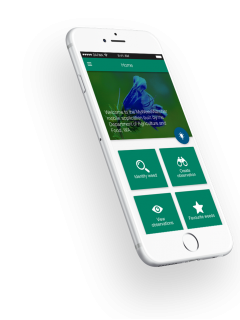Grain growers, producers and residents in Western Australia now have a better chance of identifying, mapping and managing declared weeds with the launch of the mobile device app, MyWeedWatcher.
Designed and developed by the Department of Agriculture and Food, the app is intended to improve surveillance of high priority declared weeds that impact agriculture.
Department development officer Tamrika Lanoiselet said declared weeds affected the production and profitability of agriculture and impacted WA’s access to high-value international markets.
“The new app joins a suite of pest surveillance applications developed by the department to protect agriculture from biosecurity threats,” Ms Lanoiselet said.
“The agricultural weed surveillance in the South West sub-project, which is part of the department’s Boosting Biosecurity Defences project, made possible by Royalties for Regions, has identified 20 high priority declared weeds to be targeted - 15 selected by department expert and five by the community.”
Targeted weeds include gorse, bedstraw, wheel cactus, skeleton weed and cotton bush, among others.
Community consultation was sought in the development phase of the app via a workshop and online survey to identify how stakeholders wanted to report declared plants and the information required to report and manage them.
“Detailed web pages were developed for each weed to enable community members to identify, control and report weeds, and materials were developed to help individuals or biosecurity groups control priority weeds,” Ms Lanoiselet said.
“Feedback from stakeholders shaped the development of MyWeedWatcher app, which enables users to use a smartphone or tablet device to identify, survey and report weeds direct to the department and view results online.”
A guide helps users to identify weeds according to the plant’s characteristics, including the type of plant, flower colour and leaf shape.
A reporting feature then maps the location of the weeds and adds photos and other information provided, such as the density or number of weeds and any weed control undertaken.
These reports are sent directly from mobile devices to the department for identification or verification and potential response, while outcomes are mapped online.
“In instances where reports of C1 weeds, which aren’t present in WA, and C2 weeds, which are slated for eradication, department staff will verify the photos and reports before releasing them to the map,” Ms Lanoiselet said.
“Department staff will also determine the best course of action for C1 and C2 weeds, such as control recommendations.
Ms Lanoiselet said improved agricultural weed surveillance in the South West was expected to assist stakeholders’ response to, and management of, high priority declared plant infestations, and subsequently increase industry profitability.
“The app and its survey tool will also help Recognised Biosecurity Groups determine their weed management options,” she said.
MyWeedWatcher app can be downloaded free from the App Store or Google Play.
People without a mobile device could report declared weeds via the department’s website.
More information about the MyWeedWatcher app will be available at workshops on an improved biocontrol method to control wild rabbits, organised by the department and Invasive Animals Cooperative Research Centre, in conjunction with local biosecurity groups, held on Wednesday 25 May.
Workshops will be held at Bridgetown Shire Hall, corner of Hampton and Steer Streets at 12.30pm, Gelorup Community Centre, Hasties Road, Gelorup at 1pm, and at the department’s Waroona office on South Western Highway at 5pm.
To register your interest in attending the Waroona Sundowner workshop, to be hosted by the Peel-Harvey Biosecurity Group, email info@peelharveybiosecurity.info or call 0404 797 972.

Media contacts: Jodie Thomson, Dionne Tindale, media liaison +61 (0)8 8368 3937
